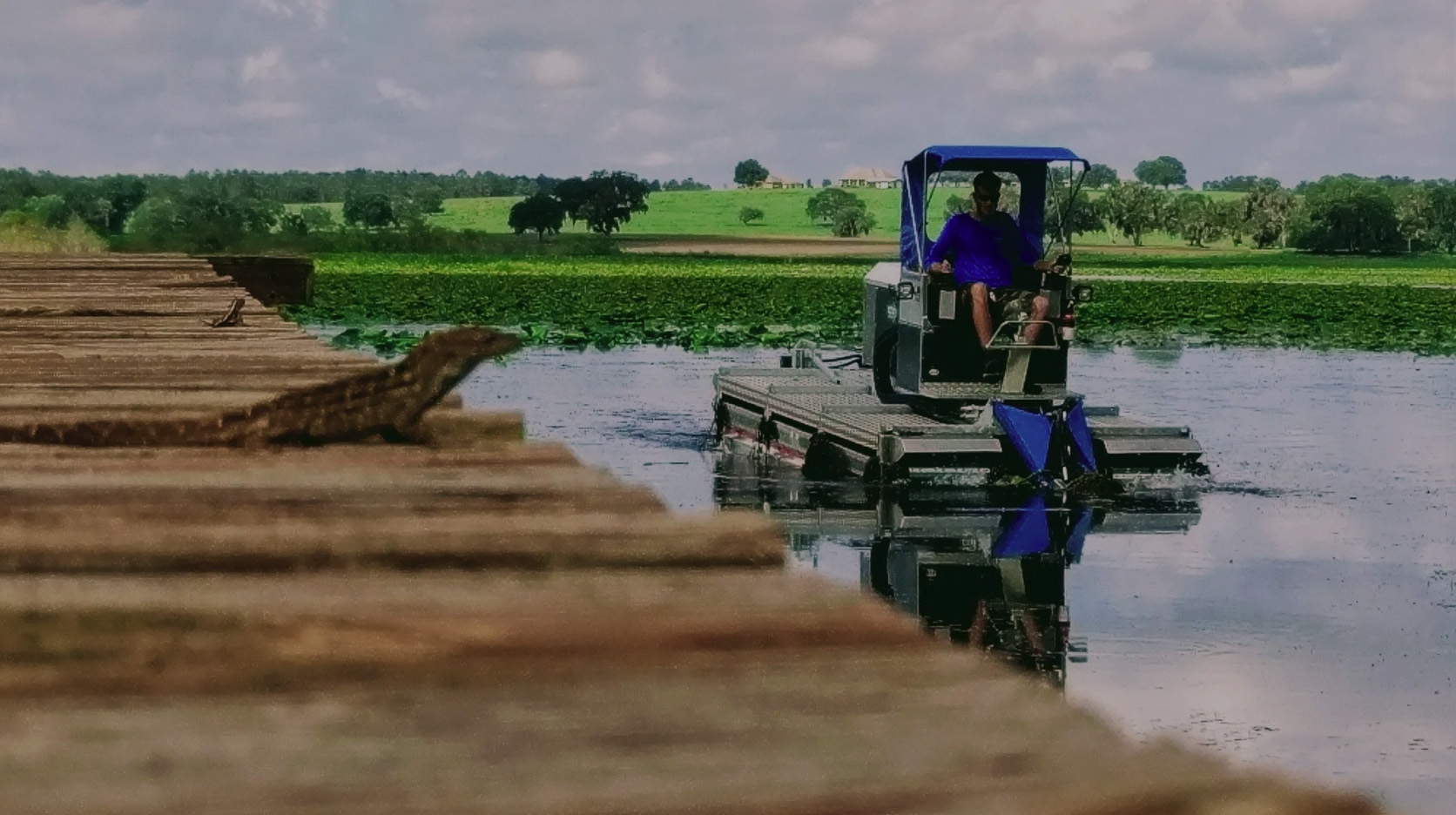Earthco AM specializes in aquatic management and restoration. What does that mean exactly? Well, it means we remove non-native and invasive vegetation that would overtake lakes, ponds, and waterways, which could choke the wildlife, reduce the water flow, provide coverage for predatory creatures to hide in, and more.
We want to help our natural bodies of water and native aquatic species to have flourishing ecosystems and a healthy environment. As we continue to grow in this field, we will aim for more services that would be beneficial for the ecosystem and property owners:
We service all of Florida and can do small residential jobs to large commercial jobs. Our equipment has little impact on yards, which makes it ideal for the residential areas, yet effective enough to be utilized for commercial projects. Contact us for a free proposal!
Terms & Definitions
For Better Understanding
Non-Native Species:
According to The National Park Services, “Non-native species are those that have occurred outside of their natural range. That natural range could be as far as another country or as near as a different region of the same country,” and according to University of Florida, Institute of Food and Agricultural Science, “Non-native plants, also referred to as exotic or alien, are plants that have been introduced to an area from their native range, either purposefully or accidentally. The term non-native usually refers to plants from other countries, regions, or continents.”
Invasive Species:
According to The National Park Services, “a[sic] invasive species as a non-native organism whose introduction causes or is likely to cause economic or environmental harm, or harm to human, animal, or plant health,” and according to National Invasive Species Council, “…a species that is non-native to the ecosystem under consideration and whose introduction causes or is likely to cause economic or environmental harm or harm to human health.
Noxious Weeds:
According to the Plant Protection Act of 2000, “. . .any plant or plant product that can directly or indirectly injure or cause damage to crops (including nursery stock or plant products), livestock, poultry, or other interests of agriculture, irrigation, navigation, the natural resources of the United States, the public health, or the environment.”
Mechanical Control:
According to University of Florida, Institute of Food and Agricultural Science, “Mechanical control refers to the use of machinery designed to cut, shear, shred, crush, press, lift, convey, transport, and remove aquatic plants and associated organic material from waterbodies. Mechanical controls range from small cutting boats to 90-foot-long harvesters, and from shredders that slurry plants to track hoes and draglines stationed on shorelines or mounted on barges that lift plants and debris out of the water.”
Mechanical Harvesting:
Is the process of removing material with mechanical equipment opposed to chemicals. There are several procedures of mechanical harvesting. Some mechanical harvesters cut vegetation and push it to the shore where excavators and draglines can remove it from the water. Others will simply push the vegetation with a rake like front end that can uproot the vegetation and push it to the shoreline.
Mechanical Shredding:
Is the process of using rotating blades like a “Bush Hog” as a front-end attachment. The purpose of this process is to cut floating masses of vegetation or floating islands (about several inches under the surface). The material is “shredded” into varying sizes: depending if the vegetation is going to be mechanically harvested or settle to the bottom and decompose.
Mechanical Weed Cutting:
Is a similar process to mechanical shredding; however, it attempts to cut lower on the underwater plant (about a couple feet below surface) compared to the floating vegetation. Depending on the type of vegetation, it is then harvested or settles to the bottom to decompose. This setup is ideal for shallow bodies of water.
Equipment
Amphibious

Amphibious Track
- Our amphibious can reach any job site anywhere! With low terrain impact, it can traverse swamps, bayous, marsh, lakes, rivers, canals, wet or dry conditions!
- Mechanical Harvester
- Great for removing non-native and invasive vegetation out of the water
Aquatic

Airboat
- Our Airboat possesses the same capabilities as other Airboats; however, ours has a front-end attachment for mechanical shredding services
- Mechanical Shredder
- Great for cutting a path through overgrowth
Terrain

Excavator
- Our excavator has low terrain impact with a displacement of 81.2 cu inches. We utilize its capabilities to remove vegetation that the Amphibious Track pushes to the shoreline.
- Mechanical Harvester
- Helps remove non-native and invasive vegetation from the water; works best with the amphibious harvester
Contact Us
Tracy Price
Mobile: (828) 316-7764
Email: tprice.earthco@gmail.com
Office
Main: (352) 540-9666
Physical Address: 19498 Fort Dade Ave, Brooksville, FL 34601
Mailing Address: PO Box 10278, Brooksville, FL 34603





